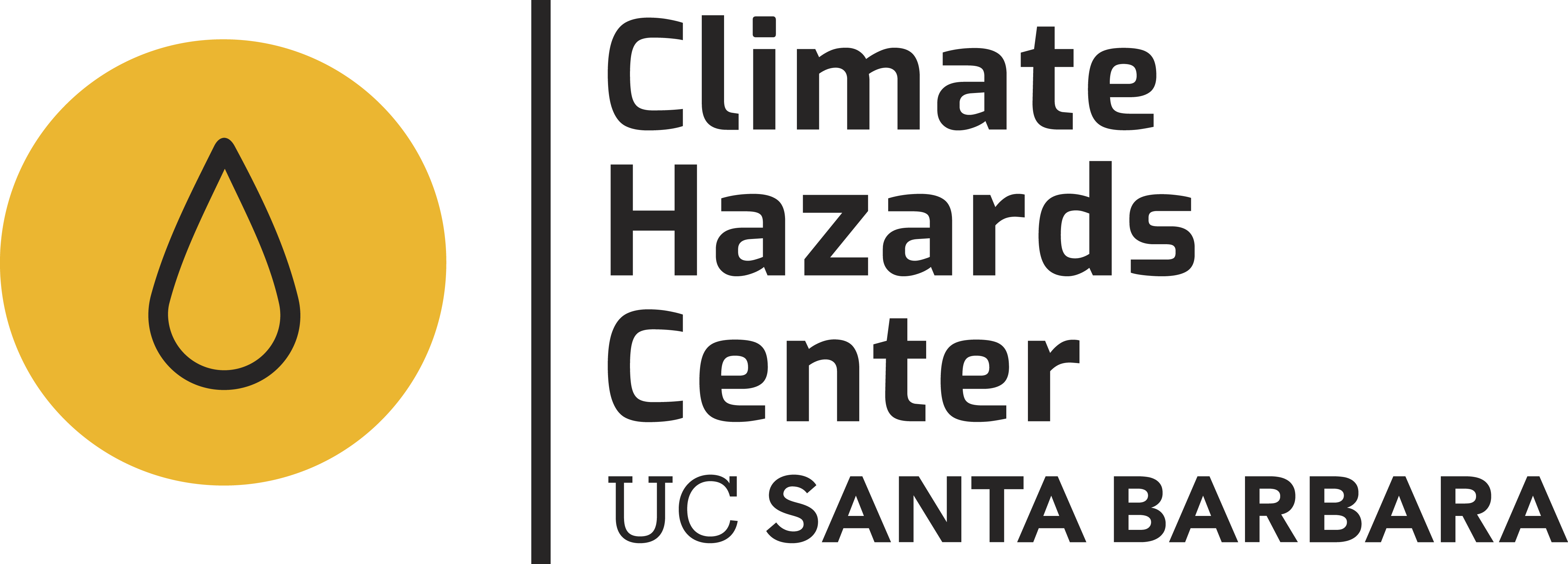Climate Hazards Center InfraRed Precipitation with Station data (CHIRPS v3)
Climate Hazards Center Infrared Precipitation with Station data (CHIRPS v3) is a 40+ year quasi-global rainfall dataset. Spanning 60°N-60°S (and all longitudes), starting in 1981 to near present, CHIRPS v3 incorporates 0.05° resolution satellite imagery with in-situ station data to create a gridded rainfall time series. As of January 2025, version 3 of CHIRPS is operational, and several data time frames are available to the public.
CHIRPS-GEFS
The CHIRPS-GEFS data set uses the higher spatial resolution of CHIRPS and the advanced forecasting ability of the NCEP GEFS to provide daily bias-corrected next 1-to-16 day and pentadal rainfall forecasts, at a spatial resolution of 0.05 degree across the globe. Combining the CHIRPS and CHIRPS-GEFS data enhances agroclimatic and hydrologic hazards early warning capabilities.
CHIRPS-GEFS data is now available for CHIRPS v3 data users.
Climate Hazards Center InfraRed Precipitation with Station data (CHIRPS v2)
Climate Hazards center InfraRed Precipitation with Station data (CHIRPS v2) is a 30+ year quasi-global rainfall data set. Spanning 50°S-50°N (and all longitudes), starting in 1981 to near-present, CHIRPS incorporates 0.05° resolution satellite imagery with in-situ station data to create gridded rainfall time series for trend analysis and seasonal drought monitoring. For detailed information on CHIRPS, please refer to our paper in Scientific Data. As of January, 2025 version 3 of CHIRPS is available to the public. Production of CHIRPS v2 will continue in parallel through 2026 to support ongoing applications during the transition to CHIRPS v3.
Climate Hazards Center’s Precipitation Climatology (CHPClim)
The Climate Hazards Center's Precipitation Climatology version 2 (CHPclim v2, data set available on our FTP here) is a new geospatial modeling approach based on moving window regressions and inverse distance weighting interpolation. This approach combines satellite fields, gridded physiographic indicators, and in situ climate normals. The resulting global 0.05◦ 25 monthly precipitation climatology is shown to compare favorably with similar global climatology products, especially in areas with complex terrain and low station densities. A detailed description of the methodology is provided in this publication while updates to the CHPclim product are discussed here.
CHIRTS Historical Data
CHIRTS-ERA5
CHGPS
The Climate Hazards Global Precipitation with Stations (CHGPS) is a high resolution gauge-based gridded monthly precipitation dataset spanning 1900 to the previous month. The CHGPS combines the excellent GPCC ‘Full’ precipitation dataset with additional station data drawn from the routinely updated and curated CHC station archive. These data are made available at resolutions of 0.05° and 0.25°. CHGPS provides one of the longest, timeliest and most complete global gauge-based precipitation records.
CHC-CMIP6
The CHC-CMIP6 dataset provides global, daily, high spatial resolution (0.05°) grids of observational and projected CHIRTS temperature, CHIRPS precipitation, ERA5-derived relative humidity, vapor pressure deficit (VPD), and maximum Wet Bulb Globe Temperatures (WBGTmax). 2030 and 2050 daily projections are based on perturbing observational fields using large CMIP6 ensembles. Finally, monthly counts of frequency of extremes for each variable were derived for the observational time period and the four sets of projections.
Climate Hazards center IMErg with Stations (CHIMES)
A gauge-enhanced data set designed to support global crop and hydrologic modeling and monitoring. CHIMES enhances the IMERG Late Run product using an updated CHC high-resolution climatology (CHPclim) and low-latency rain-gauge observations.
Evaporative Demand Drought Index (EDDI) Forecasts
Centennial Trends
In response to increasing scientific and humanitarian need to place recent seasonal and multi-annual East African precipitation extremes in a deep historic context, the Climate Hazards Center and Florida State University (FSU) pooled their station archives and expertise to produce a high quality gridded "Centennial Trends" precipitation data set.
